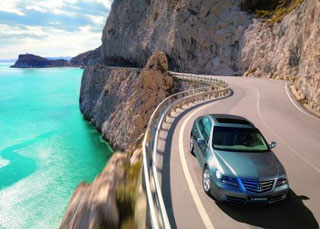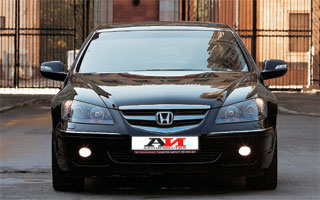Test drive Honda Legend sedan since 2006 sedan
The legend of the old
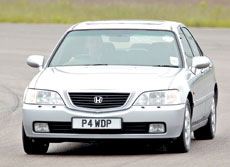 No one will argue that Honda has absolutely wonderful sports cars: the designers of this particular company are one of the best in tuning front -wheel drive car handling, it is they who can do the most outstanding high -speed engines. However, to be a leader in everything is not given to anyone: in the business class, Honda traditionally performs pale.
No one will argue that Honda has absolutely wonderful sports cars: the designers of this particular company are one of the best in tuning front -wheel drive car handling, it is they who can do the most outstanding high -speed engines. However, to be a leader in everything is not given to anyone: in the business class, Honda traditionally performs pale. Appearing in the mid-80s, Honda/Acura Legend looked very attractive: excellent equipment, beautiful body contours, a powerful engine. But in the end, she spreads: a front -wheel drive sedan with a power of a little more than 200 liters. With. (namely, from the moment of the debut in 1996 to 2004, when it was discontinued, there was a second-generation Legend; after some time, a completely different 300-horsepower all-wheel drive Legend new generation could not compete with the rear-wheel drive Lexus and Infiniti, equipped with powerful power units V8. At the same time, the car was definitely higher than the class than Japanese business sedans like Toyota Camry and Mitsubishi Diamante, at least because of the size. It was the fact that Legend stood between classes (and this position turned out to be very unpleasant sides, for example, more solid, compared to representatives of the business segment, and in addition, the inability to compete with higher-class cars), and caused its place in the back rows of the market . But still, for a certain, albeit narrow, circle of consumers, such a machine is exactly what is needed.
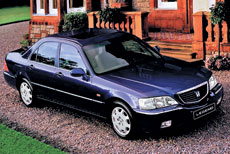 The design of the Honda Legend itself is elegance itself: she (produced only with the sedan body) has not a single inappropriate detail, besides, in what perspective you look at it, you can’t call it awkwardly. In general, an amazingly beautiful car! However, extremely conservative and boring, which for a huge number of people who consider their large car a business card is a minus. But for some, this does not matter at all: practical customers are more interested in whether the body will ask for money from them? There is no answer, resistance to corrosion even in ten -year -old specimens the highest. Problems are only with the American Acura 3.5RL, and even then because of transportation around the ocean (from sea salt they rot the air conditioner tubes). The electrician works uninterruptedly, there are no serious complaints.
The design of the Honda Legend itself is elegance itself: she (produced only with the sedan body) has not a single inappropriate detail, besides, in what perspective you look at it, you can’t call it awkwardly. In general, an amazingly beautiful car! However, extremely conservative and boring, which for a huge number of people who consider their large car a business card is a minus. But for some, this does not matter at all: practical customers are more interested in whether the body will ask for money from them? There is no answer, resistance to corrosion even in ten -year -old specimens the highest. Problems are only with the American Acura 3.5RL, and even then because of transportation around the ocean (from sea salt they rot the air conditioner tubes). The electrician works uninterruptedly, there are no serious complaints. And what's inside? The places of abundance: there are enough spaces for both front and rear passengers, and no other business departments (unless Chrysler 300M can be compared with a large Japanese) and did not stand nearby. True, the trunk is relatively small (there are even golf class sedans, in which the volume of the luggage compartment is over 450 liters), but if we are talking about a representative car, then there is a lot of space and
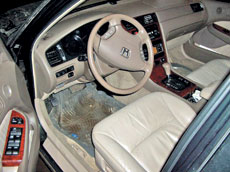 no need: a bag with equipment for playing golf got up and wonderful. As for the selection of finishing materials, ergonomics and configuration, Honda is simply impeccable: the seats are comfortable, all buttons and switches (and there are many of them, the benefit is quite consistent with a considerable price of the model) are easily accessible, moreover, all surfaces are in appearance and on The touch is very pleasant. There are no complaints about the vibro -acoustic properties: the representative Honda reliably encourages passengers from the noise and gam of the surrounding world.
no need: a bag with equipment for playing golf got up and wonderful. As for the selection of finishing materials, ergonomics and configuration, Honda is simply impeccable: the seats are comfortable, all buttons and switches (and there are many of them, the benefit is quite consistent with a considerable price of the model) are easily accessible, moreover, all surfaces are in appearance and on The touch is very pleasant. There are no complaints about the vibro -acoustic properties: the representative Honda reliably encourages passengers from the noise and gam of the surrounding world. A large car is difficult to force to drive as it should be a real Honda. Just because it is a big car. But the Japanese tried to control Legend at a very decent level, the car confidently passes turns and willingly rebuilt from a row in a row. But he does maneuvers somehow distant, nevertheless, we are talking about a comfortable car on which it is more pleasant to drive along the highway than on serpentines. Yes, on the highway Honda feels like a fish in water: on good and bad roads, it goes softly, quietly and confidently. But the dynamics leaves much to be desired. No, a 3.5-liter V6 gives a heavy legend at least sufficient thrust, but other large Japanese sedans with V8 engines under the hoods go much more assertive.
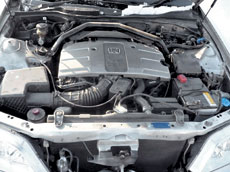 The Legend motor was installed one with a volume of 3.5 liters, with six cylinders and a capacity of 205 liters. With. If you forget that it is clearly low for a heavy sedan, then the rest of the unit is very, very glorious: a typical Japanese engine, which is distinguished by smooth work and low noise levels. Even standing next to the Honda open hood, you will be pleasantly surprised by the quiet work of the motor (European engines, especially, as they say, in age, cannot boast of noiselessness). The most important aggregate of Legend is trouble -free. The main costs require motor oil (once every 15 thousand km, it needs to be changed, although in large cities it is recommended to do this twice as often), candles (with platinum electrodes, they will pass thousandths of forty kilometers, provided that the supply of gasoline will be replenished at proven gas stations) And the timing belt (the part lives no more than 100 thousand km). Connoisseurs will surely like the fact that there are no hydraulic compensators in the engine: valves clearance are adjusted by selection of washers. It is desirable to control the gaps every 4050 thousand km, but it should be noted that after such a run they go extremely rarely. As a rule, the mileage should be three to four times more.
The Legend motor was installed one with a volume of 3.5 liters, with six cylinders and a capacity of 205 liters. With. If you forget that it is clearly low for a heavy sedan, then the rest of the unit is very, very glorious: a typical Japanese engine, which is distinguished by smooth work and low noise levels. Even standing next to the Honda open hood, you will be pleasantly surprised by the quiet work of the motor (European engines, especially, as they say, in age, cannot boast of noiselessness). The most important aggregate of Legend is trouble -free. The main costs require motor oil (once every 15 thousand km, it needs to be changed, although in large cities it is recommended to do this twice as often), candles (with platinum electrodes, they will pass thousandths of forty kilometers, provided that the supply of gasoline will be replenished at proven gas stations) And the timing belt (the part lives no more than 100 thousand km). Connoisseurs will surely like the fact that there are no hydraulic compensators in the engine: valves clearance are adjusted by selection of washers. It is desirable to control the gaps every 4050 thousand km, but it should be noted that after such a run they go extremely rarely. As a rule, the mileage should be three to four times more. From the moment the car was purchased to other hands, it must be remembered that Honda, as you know, is very demanding on frequency and quality
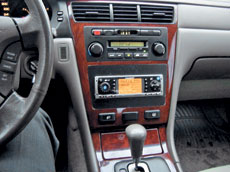 service, as well as to the quality of materials used. If everything is done according to the mind, then Legend will not give a reason to reproach itself in disgrace. And, if we serve the car according to the residual principle (as Americans like to do; by the way, that is why it is undesirable to buy American Acura 3.5RL, although they are well equipped), it may be offended. Why upset her once again?
service, as well as to the quality of materials used. If everything is done according to the mind, then Legend will not give a reason to reproach itself in disgrace. And, if we serve the car according to the residual principle (as Americans like to do; by the way, that is why it is undesirable to buy American Acura 3.5RL, although they are well equipped), it may be offended. Why upset her once again? The gearbox on Legend used one-only automatic with four ranges. On Russian roads, she showed herself from the best side: she works smoothly, and serves for a long time and without fail. True, as experience shows, our drivers roll even the most reliable machine. Therefore, before buying, it will not hurt to diagnose the knot or at least check on the go. As, by the way, the oil in the unit after the purchase (if the state of lubrication leaves much to be desired).
Honda suspension has an excellent resource. Partly, of course, thanks to the leading style of most owners of such machines: the car has a leisurely and sedate movement. At the same time, such reliability is impossible without competent study of details. The first replacements occur, as a rule, after 100 thousand km: about 130 thousand, the bushings and stabilizers are unusable, as well as rotary fists (balls that are getting tired by that time, cannot be changed separately from these same fists). Finally, after 150 thousand km, levers and shock absorbers begin to show signs of weakness. The fact that all these details are worth a lot is upset.
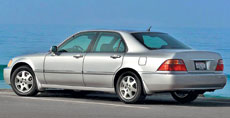 Those dealing with a heavy car, we can say that the service life of its brakes is simply excellent: the front pads go at least 30 thousand km, the rear ones are one and a half times longer, and the discs will live twice as well, or even three times longer than the pads.
Those dealing with a heavy car, we can say that the service life of its brakes is simply excellent: the front pads go at least 30 thousand km, the rear ones are one and a half times longer, and the discs will live twice as well, or even three times longer than the pads. In many ways, Honda Legend is an absolutely wonderful car: a beautiful, with a magnificent salon, besides, in Japanese reliable. Finally, there are no serious flaws in it. But there are shortcomings and flaws. The latter means a lack of power and, accordingly, the dynamics. And the disadvantages are expressed by the cost of spare parts and the cost of the machine itself: possession of Legend is expensive! Although the absence of a powerful driving force was still much more destructive than the high price (lovers of such cars are used to a solid value). But if this is not the main thing and you can afford to buy such a machine, then the rest of Legend is a very good investment.
Some characteristics
Type of body sedan
The number of doors is 4
The number of places 5
Length, mm 4995
Width, mm 1820
Height, mm 1430
Wheel base, mm 2910
Road clearance, mm 150
Acceleration to 100 km/h, sec. 9.1
Maximum speed, km/h 215
The advantages and disadvantages of the model
Advantages
Great equipment
High level of comfort
Harmonious appearance
Flaws
Small trunk
A relatively weak motor
Dear spare parts
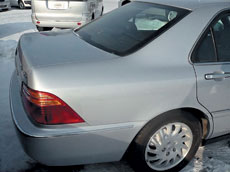
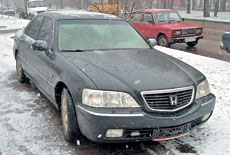
Honda Legend Crash Test Video since 2006
Honda Legend Sedan test drive since 2006
Honda Legend Sedan Crash Test since 2006
Krassh Test: Detailed Information33%
Driver and passengers
22%
Pedestrians
40%
Children-passengers







